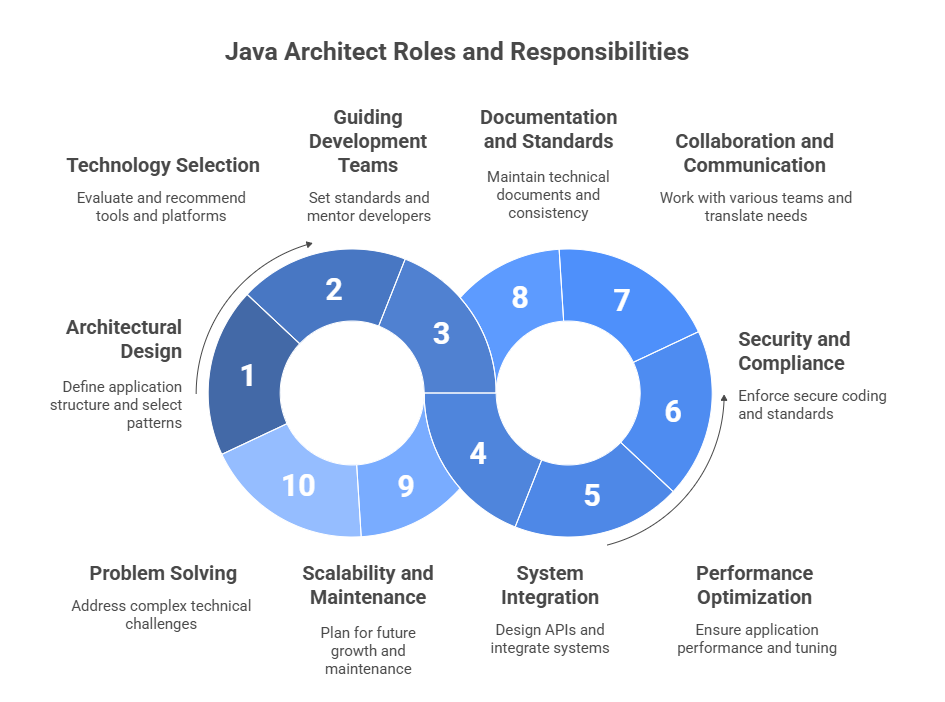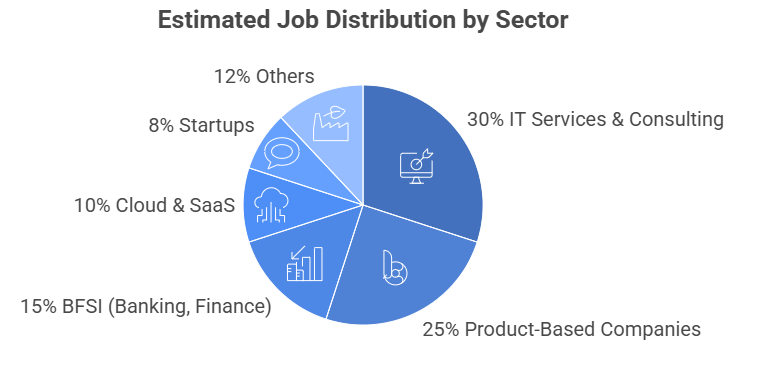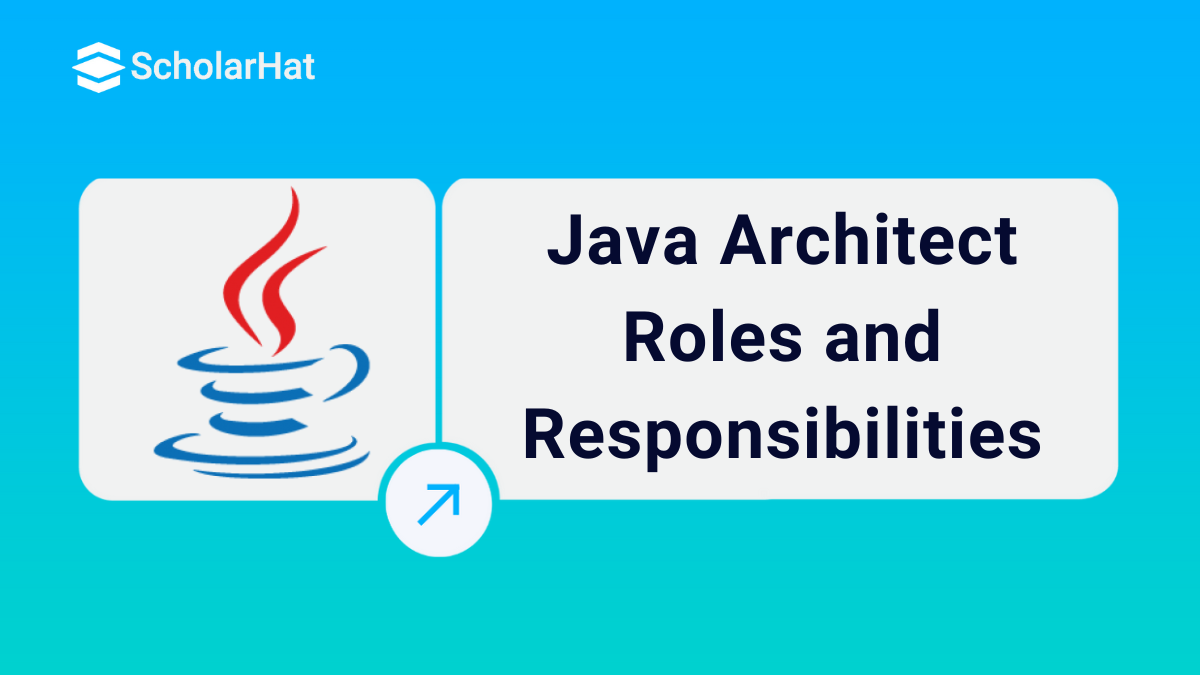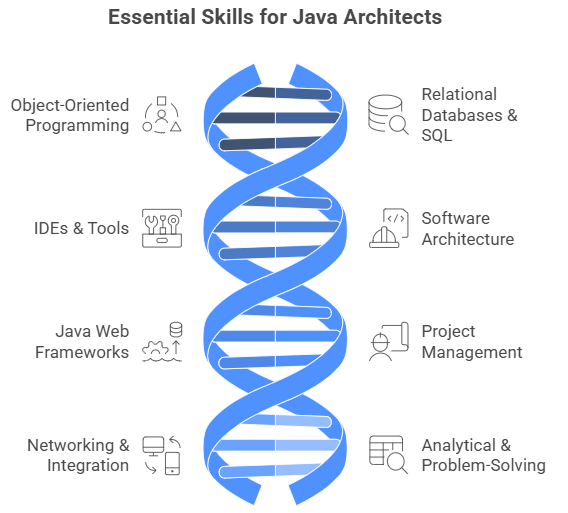06
DecJava Architect Roles and Responsibilities Explained
In this Java tutorial, you will be able to know about the roles and responsibilities of a Java architect, the Java architect demand, what a Java architect does, the salary range of a Java architect and the career path to become a Java architect.
| Ready to take your Java career to the next level? Enroll in our Java Solution Architect Certification Training and become the tech leader companies need. |
Who is a Java architect?
A Java architect is a software development professional who specializes in developing software architecture for Java-based applications. They also work on identifying business problems and designing solutions, among other tasks. The main role of a Java architect is developing software architecture and integrating it into Java-based applications. Java architects work for organizations to develop software architecture for the applications to help them solve business problems.
Difference between a Java Developer and a Java Architect.
| Java Developer | Java Architect |
| Focuses on writing and maintaining code. | Focuses on high-level system design and architecture. |
| Works under guidance of leads/architects. | Provides technical leadership and direction to the dev team. |
| Handles specific modules/features. | Designs how all modules interact in a unified system. |
| Implements features using chosen tech. | Selects appropriate frameworks, tools, and best practices. |
A Java Developer builds the application like a skilled worker, while a Java Architect creates the blueprint and guides the construction of the entire system.
Core Roles and Responsibilities of a Java Architect
The roles and responsibilities of a Java Architect focus on designing and managing the technical blueprint of Java-based applications to ensure they are scalable, secure, and aligned with business goals.

| Responsibility Area | Description | Job Role |
| Architectural Design | Define software architecture, select design patterns, and structure systems. | Lead system architect and blueprint designer |
| Technology Selection | Choose appropriate tools, frameworks (Spring, Hibernate), and platforms. | Technology strategist and stack decision-maker |
| Development Guidance | Set coding standards, review code, mentor developers. | Technical mentor and development process overseer |
| System Integration | Design APIs, integrate third-party services, support microservices. | Integration architect and API planner |
| Performance Optimization | Optimize backend performance, JVM tuning, caching, and database efficiency. | Performance analyst and system tuner |
| Security and Compliance | Enforce secure coding practices, ensure regulatory compliance. | Security enforcer and compliance advisor |
| Collaboration | Coordinate with business analysts, DevOps, QA, and stakeholders. | Cross-functional team communicator and project aligner |
| Documentation | Maintain architecture diagrams, design docs, and technical decisions. | Documentation lead and architecture record keeper |
| Scalability and Maintenance | Ensure systems can grow and are easy to maintain over time. | Scalability planner and long-term system maintainer |
| Problem Solving | Resolve technical challenges and suggest innovative solutions. | Technical troubleshooter and solution architect |
Roles and Responsibilities of Java architect
1. Designing Scalable Java Architectures
A Java Architect is responsible for the blueprint of the entire application or system. This includes:
- Defining the software architecture style (e.g., microservices, monolith, event-driven).
- Deciding on layered architecture (presentation, business, persistence, and database layers).
- Using UML diagrams, sequence diagrams, and architecture patterns to visualize the flow.
- Ensuring the system design supports performance, scalability, security, and maintainability.
They balance short-term project goals with long-term technical sustainability, avoiding architectural pitfalls like tight coupling or unnecessary complexity.
2. Selecting Optimal Technologies and Frameworks
Choosing the right tech stack is critical. A Java Architect evaluates:
- Java versions, frameworks (Spring Boot, Hibernate, etc.), build tools (Maven, Gradle).
- Front-end compatibility (Angular, React), messaging systems (Kafka, RabbitMQ).
- Database systems (MySQL, PostgreSQL, MongoDB), and cloud platforms (AWS, Azure).
- DevOps tools (Docker, Kubernetes, Jenkins) and security solutions (OAuth2, JWT).
They make evidence-based decisions to select the most efficient, cost-effective, and future-ready technologies.
3. Guiding Java Development Teams
Java Architects don’t just design — they guide developers through implementation by:
- Defining coding standards, design principles, and best practices.
- Conducting code reviews, architectural audits, and resolving design conflicts.
- Assisting with modularization, clean code, and reusability.
- Training junior engineers and ensuring the development team stays aligned with the architecture.
They act as technical mentors while also keeping the project on track.
4. Integrating Systems and APIs
A key role of a Java Architect is to ensure smooth integration between:
- Internal subsystems (authentication, payment, notification).
- Third-party services (REST APIs, external databases, payment gateways).
- Legacy systems and modern platforms (e.g., integration via ESB or API Gateway).
They must define integration contracts, manage data consistency, and design for fault tolerance and interoperability.
5. Optimizing Application Performance
Java Architects are accountable for the application's speed, reliability, and responsiveness, including:
- Analyzing load and stress test results.
- Identifying performance bottlenecks in code, queries, or architecture.
- Suggesting and implementing caching strategies, database indexing, lazy loading, and asynchronous processing.
Performance tuning often means writing better code, choosing efficient algorithms, or changing deployment architecture (e.g., CDN, distributed systems).
6. Ensuring Security and Compliance
Java Architects must embed security into the application architecture by:
- Implementing authentication and authorization mechanisms (OAuth2, JWT).
- Ensuring data encryption, secure APIs, and prevention of common attacks (XSS, CSRF, SQL injection).
- Adhering to compliance regulations like GDPR, HIPAA, or PCI-DSS.
- Reviewing system logs and enabling auditing and monitoring. Security is proactive, not reactive — and must be designed into every layer of the application.
7. Collaborating with Stakeholders
Java Architects work closely with:
- Business stakeholders to translate business needs into technical requirements.
- Product managers to ensure realistic timelines and deliverables.
- Developers and QA teams for seamless implementation and testing.
- DevOps teams to ensure smooth deployments, rollback mechanisms, and CI/CD pipelines.
Clear communication, active participation in Agile ceremonies, and collaborative decision-making are critical.
8. Creating Comprehensive Documentation
Architectural documentation is not just for formality — it’s a living reference. Java Architects must:
- Document system designs, modules, workflows, and API specifications.
- Create diagrams (UML, ERD, flowcharts) for understanding system structure.
- Maintain versioned architecture guides for onboarding and future updates.
Good documentation ensures knowledge transfer, reduces dependency on individuals, and helps in scaling teams.
9. Planning for Scalability and Maintenance
Java Architects are responsible for ensuring that the system:
- Can handle increasing loads (horizontal and vertical scaling).
- Supports multi-tenant architecture (if needed) or distributed deployment.
- Remains maintainable over time, with loosely coupled modules and proper logging/monitoring.
- Has clear upgrade and deprecation strategies for components and APIs.
They plan for the future growth of both the software and the business.
10. Solving Complex Technical Challenges
Architects are the go-to experts for solving complex technical challenges, including:
- Architecture refactoring in failing systems.
- Addressing non-functional issues like memory leaks or security vulnerabilities.
- Resolving deadlocks, data inconsistencies, and deployment issues.
- Making trade-offs between competing priorities (speed vs. security, cost vs. performance).
They bring a solution-oriented mindset, backed by experience and analytical skills.
What Does a Java Architect Do? Daily Responsibilities
The main role of a Java architect is developing software architecture and integrating it into Java-based applications. The job responsibilities of a Java architect can include:
- Identifying business problems and designing solutions
- Evaluating existing architecture systems
- Developing software architecture for Java-based applications
- Troubleshooting technical issues and design flaws
- Working both individually and on a team to develop designs
- Collaborating with other departments to address the needs and goals of the organization
- Keeping Java knowledge and skills up to date by attending professional events and reading industry news
In-Demand Skills for Java Architects in 2025
Java Architects are in high demand globally:

| Platform | India (Jobs) | US (Jobs) | Global Jobs |
| Linkedln | 5,000+ | 15,000+ | 30,000+ |
| Naukri.com | 3,000+ | - | - |
| Indeed | 2,500+ | 12,000+ | 25,000+ |
| Glassdoor | 1,500+ | 10,000+ | 20,000+ |
These numbers are growing due to demand in IT Services and Consulting, fintech, healthcare, e-commerce, and government digital transformation projects.

Java Architect Jobs in India: Approx. 10,000 – 12,000+ roles
Java Architect Job Requirements Across Top Companies
Let's now look at real-time Java Architect responsibilities based on job roles from actual companies. These are compiled by analyzing real job postings from firms like Capgemini, TCS, Infosys, Amazon etc.
Capgemini – Java Architect
- Lead technical architecture for microservices and cloud-native applications.
- Review code quality and ensure security standards.
- Drive DevOps adoption (CI/CD pipelines, Kubernetes, Docker).
- Collaborate with business teams to understand project goals.
TCS (Tata Consultancy Services)
- Architect and design enterprise-grade Java applications using Spring Boot and Microservices.
- Provide technical leadership to development teams across locations.
- Define best practices and enforce coding standards.
- Work on performance optimization and scalability.
- Guide DevOps implementation and CI/CD pipelines.
Infosys
- Engage in client discussions to define system architecture.
- Lead design for distributed systems, RESTful APIs, and cloud-native apps.
- Support migration from monolithic to microservices architecture.
- Ensure security, compliance, and quality in code delivery.
- Mentor and conduct code reviews for teams.
Amazon (AWS)
- Help partners design scalable applications using AWS and Java stack.
- Conduct architectural workshops and PoCs.
- Implement design patterns and fault-tolerant strategies.
- Guide on API gateway, Lambda, S3 integrations.
- Maintain high availability and cost-effective architecture.
Java Architect Salary: What to Expect in 2025
Table based on profiles, experience, and location. In India and in the US:
| Profile Level | Experience | India (Annual) | USA (Annual) | Focus on |
| Entry-Level Developer | 0–2 | ₹3 – ₹6 LPA | $20,000 – $80,000 | Basic coding & learning frameworks |
| Junior Java Architect | 2-4 years | ₹6 – ₹10 LPA | $80,000 – $100,000 | Entry into architecture from senior dev |
| Mid-Level Architect | 5–8 years | ₹12 – ₹18 LPA | $100,000 – $130,000 | Leads modules, API design, team mentoring |
| Senior Java Architect | 9–12 years | ₹18 – ₹28 LPA | $130,000 – $160,000 | Oversees end-to-end architecture |
| Lead/Principal Architect | 13–17 years | ₹28 – ₹40 LPA+ | $160,000 – $190,000 | Cloud, DevOps, security, large teams |
| Enterprise Architect | 18+ years | ₹40 LPA – ₹55 LPA+ | $190,000 – $220,000+ | Organization-wide strategy & design |
Essential Skills for a Java Architect
- Object-Oriented Programming (OOP): Deep understanding of Java principles like encapsulation, inheritance, and polymorphism.
- Relational Databases & SQL: Ability to design, query, and optimize databases with tools like MySQL or PostgreSQL.
- IDEs & Tools: Proficiency with IDEs like IntelliJ or Eclipse, and version control systems like Git.
- Software Architecture: Knowledge of design patterns, modular design, scalability, and maintainability.
- Java Web Frameworks: Experience with Spring Boot, JSF, Hibernate for backend and web development.
- Project Management: Skills in team leadership, planning, and coordination for timely project delivery.
- Networking & Integration: Understanding of HTTP, APIs, and system communication over networks.
- Analytical & Problem-Solving: Ability to assess, troubleshoot, and optimize architectural decisions.
Career Path for Becoming a Java Architect
Career path of becoming a Java architect: Entry-level to Java Developer → Senior Java Developer → Java Architect → Enterprise Architect.
- Learn core Java, OOP, basic SQL, and tools like Git & Maven.
- Write simple programs and fix bugs under guidance.
- Build REST APIs using Spring Boot and Hibernate.
- Work on backend modules and collaborate with teams.
- Lead modules, apply design patterns, and mentor juniors.
- Focus on scalability, performance, and microservices.
- Design full application architecture.
- Choose tech stack, enforce standards, and ensure system quality.
- Define enterprise-wide IT strategy and architecture.
- Align technology with business goals across multiple systems.
Conclusion
The role of a Java Architect is both strategic and technical — blending deep programming expertise with high-level architectural thinking. As organizations move toward cloud-native, scalable, and secure solutions, Java Architects are becoming key decision-makers in defining how applications are structured, integrated, and evolved.
Looking to learn Java programming for free and build real coding skills that matter? You’re at the right place! ScholarHat’s Java online course free with certificate, is designed for absolute beginners and self-learners who want to master Java step by step — without paying a rupee.
FAQs
- IT Services (TCS, Infosys, Wipro)
- Banking and Finance (JPMorgan, Goldman Sachs)
- E-commerce (Amazon, Flipkart)
- Healthcare, Telecom, and Government projects






